

Max Davies
2026 Toyota HiAce review
4 Hours Ago
The Ford E-Transit van will be the first pure-electric vehicle from the Blue Oval in Australia. It's unlike any Transit before it.
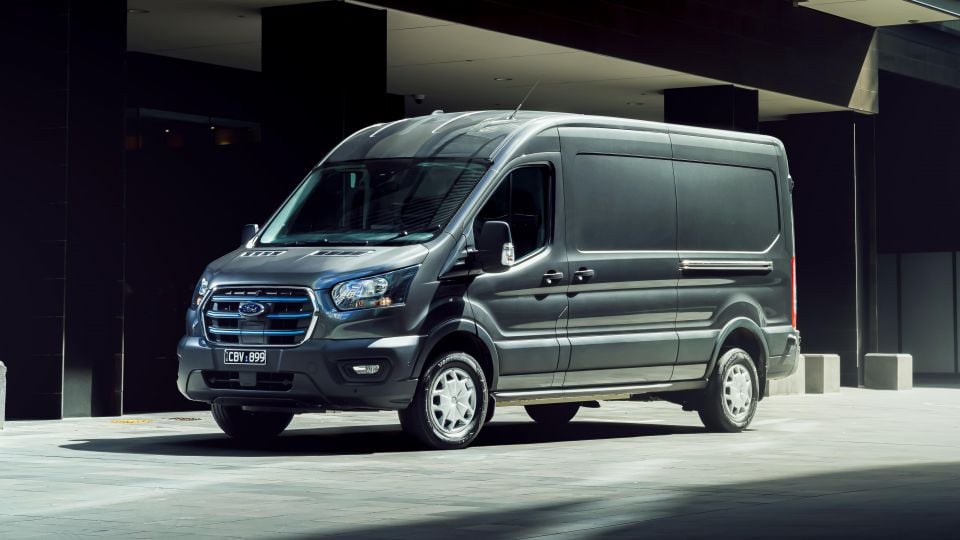
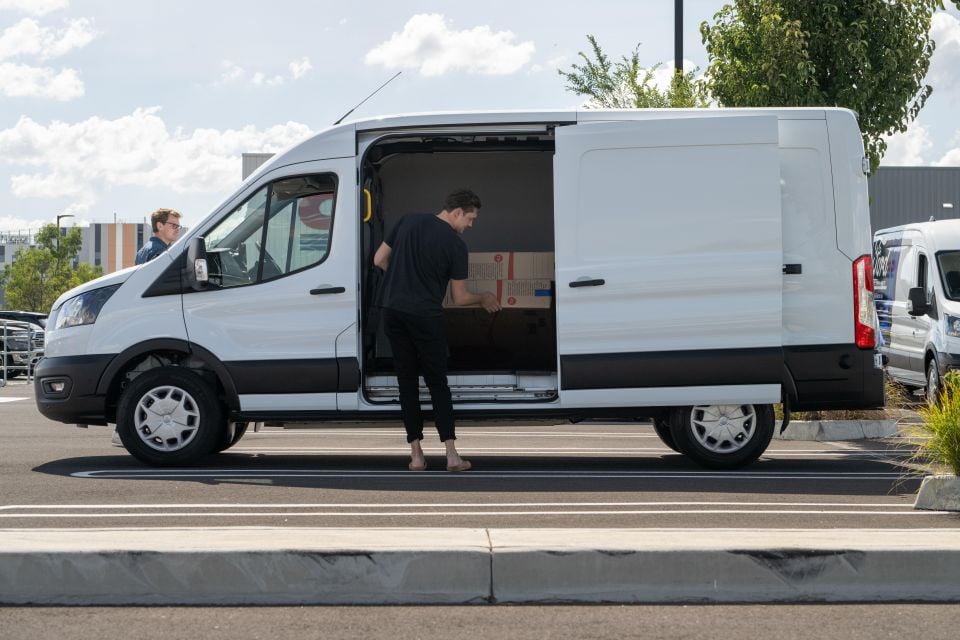

Quickly see how this car stacks up against its competition. Select any benchmark to see more details.
Where expert car reviews meet expert car buying – CarExpert gives you trusted advice, personalised service and real savings on your next new car.
Life is getting better for van drivers.

They spend more time than most on the road, but for a long time were forced to do it in rattly boxes that lacked the same safety equipment as the average punter who putters from home to work and back again every day.
Well, it’s time to meet the new breed of van. Along with a full range of active safety features, which help take the load off busy drivers doing long stints behind the wheel, the latest crop of load-luggers are going electric.
Rather than the offbeat diesel clatter that’s accompanied the Ford Transit throughout its 78-year life, the E-Transit you see here hums along like a big, white spaceship.
There’s plenty of things about electric power that makes it a natural fit for commercial vehicles like the Transit. With lots of torque, electric motors are good at hauling heavy loads, and the lack of local emissions and noise pollution is beneficial if you’re making lots of stops in the city.
Of course, being able to actually reach your destination is also key for van drivers. Range anxiety, anyone?
We had a short stint behind the wheel of the new Ford E-Transit to see what the future looks like for the average man with a van.
The E-Transit kicks off at $104,990 before on-road costs and options, with the High Roof model adding $1500 to that figure.
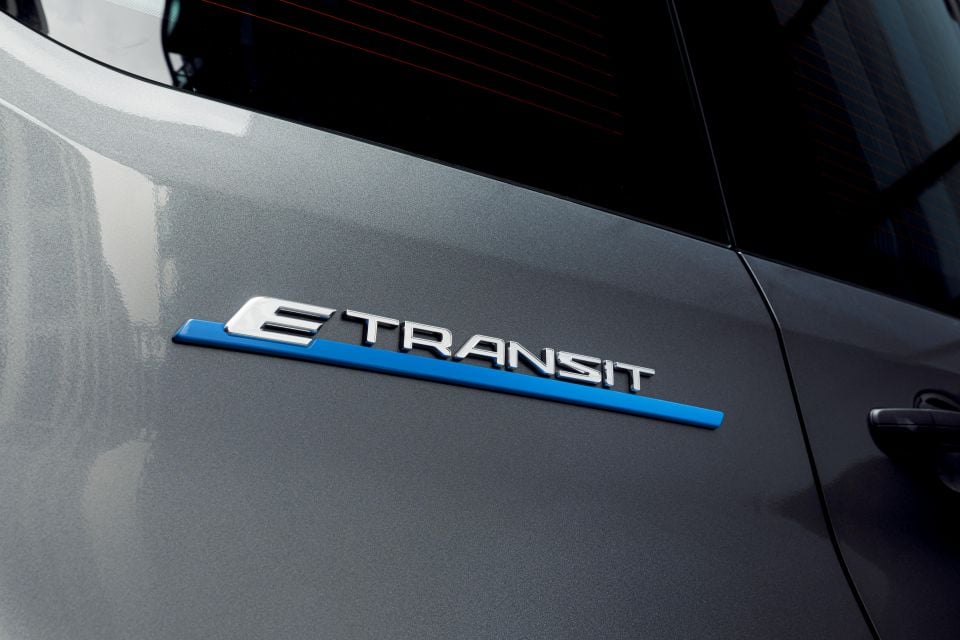
That comfortably undercuts the only real rival for the E-Transit, the LDV eDeliver 9 ($116,537).
It’s also just shy of $50,000 more than the starting point for the existing diesel Transit range. Yes, you’ll save money on diesel, but there will need to be other motivations for going electric beyond pure value.
There are a few options, however. Prestige paint is $700, a single passenger seat in place of the standard three-seat bench is $150, and dual side doors will set you back $1000.
Buy your new car without the stress. It's fast, simple and completely free.

Great service from Travis and team, second time I have used this business would not hesitate to recommend them to anyone
Craig C.
Purchased a Ford Ranger in Sunshine Coast, QLD
CarExpert helped Craig save thousands on his Ford Ranger, now let us save you on your next new car.
Find a dealLack of noise aside, there’s no doubt this is a Transit from behind the wheel.
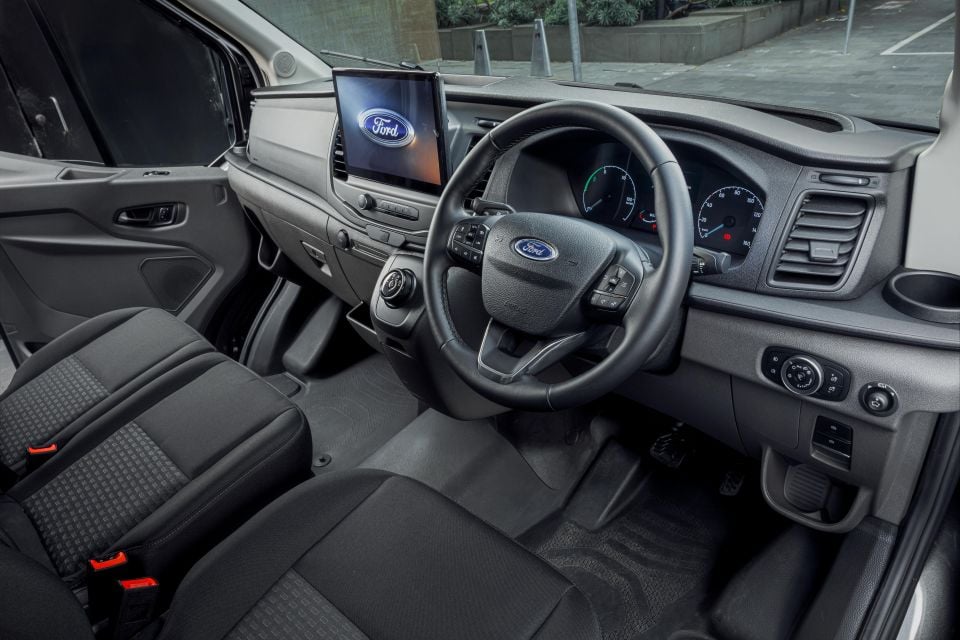
You sit high, looking down over a stubby little bonnet, and the only real changes between diesel and electric power is the switch from a rev counter to a power meter. Well, that and the swap from a petrol bowser to a little battery icon on the fuel gauge.
That’s no bad thing. For starters, forcing drivers who’ve spend thousands of hours behind the wheel of diesel vans to relearn things is a surefire way to get them offside. Beyond that, the Transit didn’t have much wrong with it as a base.
The three-seat bench is generously padded, and has just enough range in it to accomodate leggy drivers, and the steering wheel comes out nicely to meet the driver. It’s not a Range Rover, but it does seem like a good place to spend time for long stints.
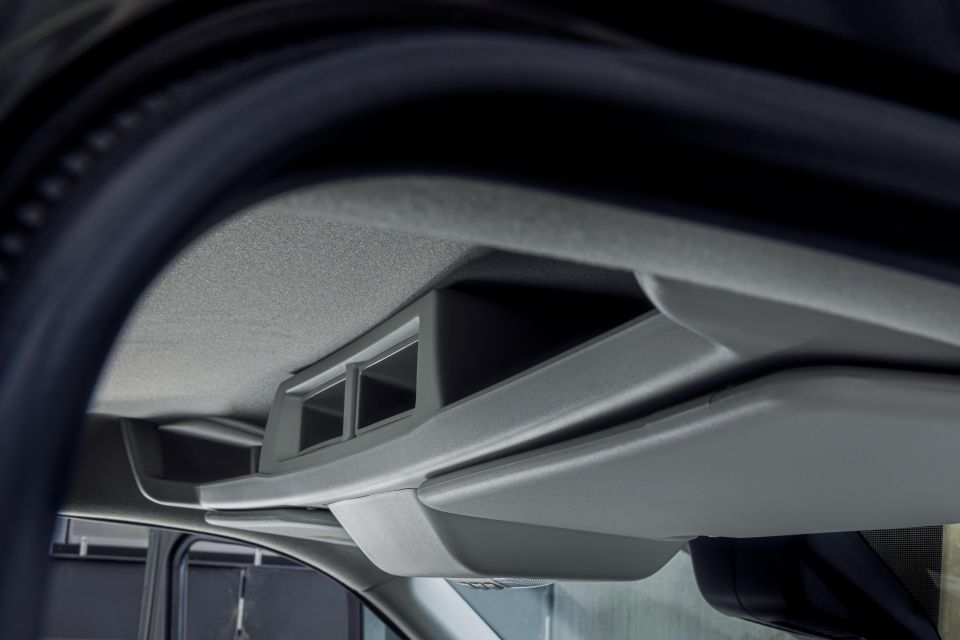
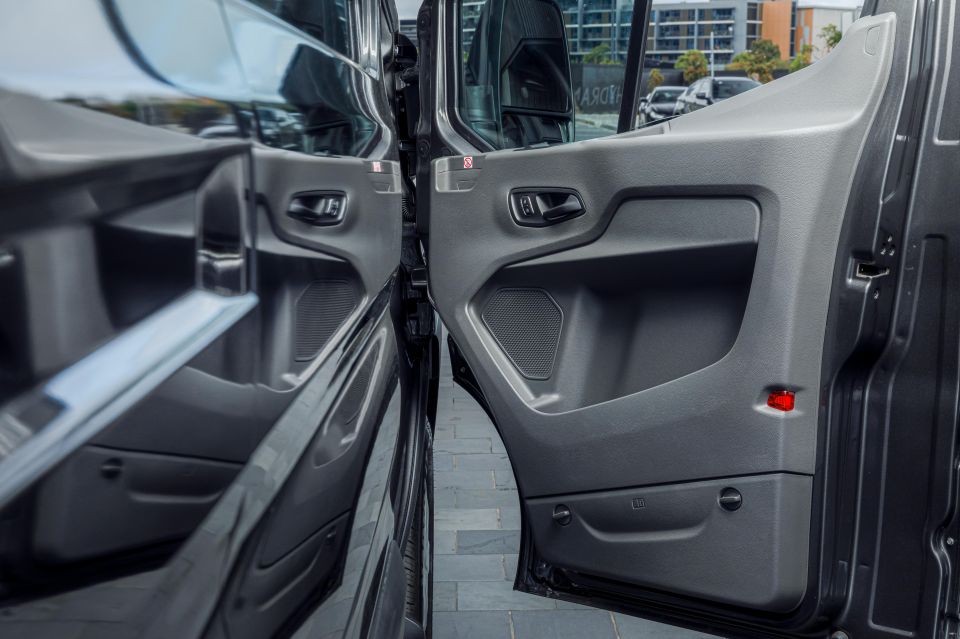
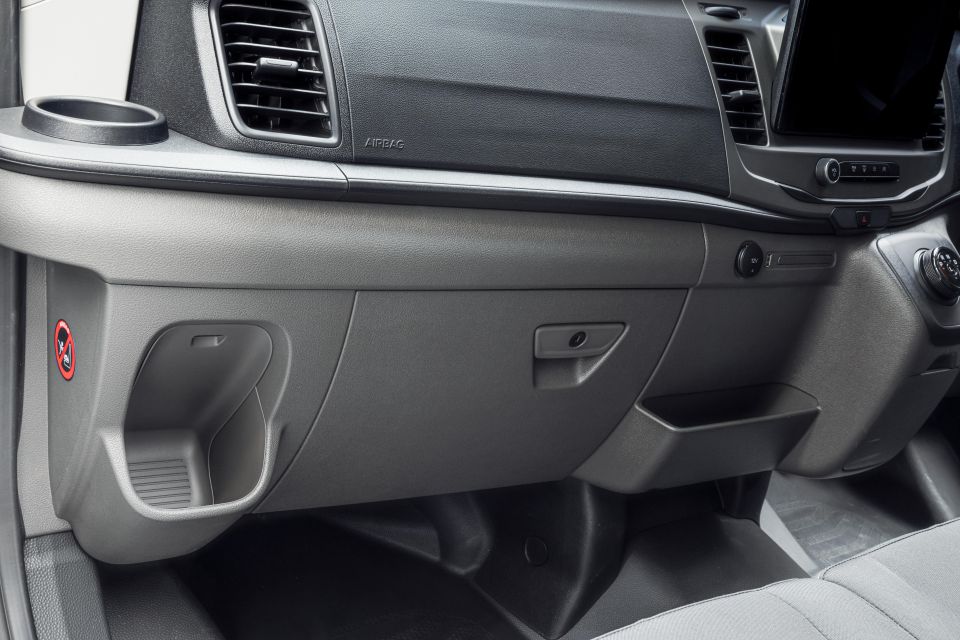
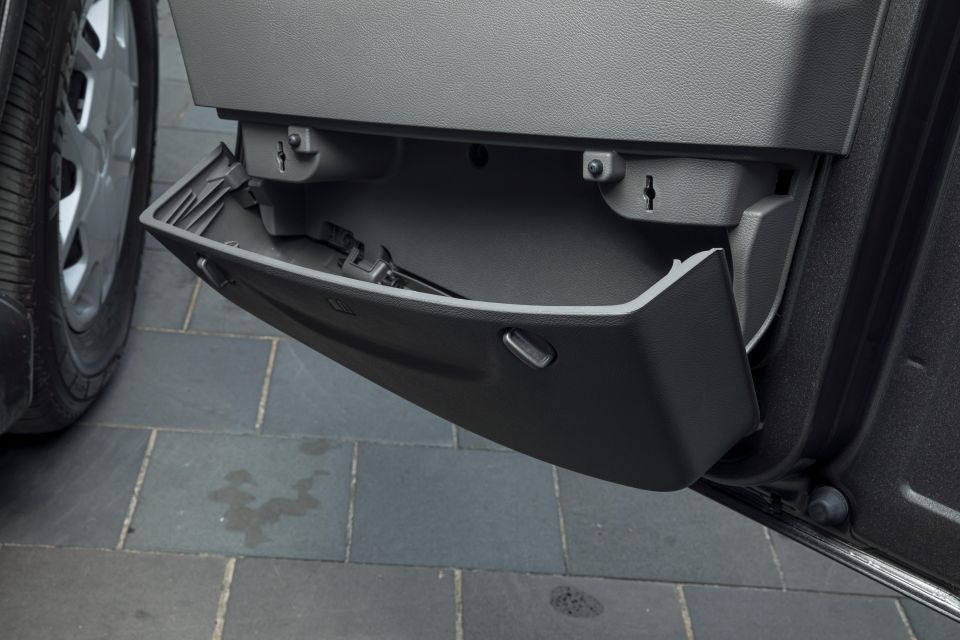
There are five cupholders, two bottle holders, two 12V spots, and one USB-A and one USB-C plug up front, so there’s no excuse for drivers or their devices to run out of juice.
There are also massive door pockets, roof slots for documents, plenty of space on the dashboard, and a huge glovebox.
Ford’s latest SYNC infotainment software is good in the Ranger, where it’s displayed on a vertically-oriented screen.
Here, it’s on a widescreen display that’s quick to respond to inputs, features wireless Apple CarPlay, and includes a range of EV-focused displays.
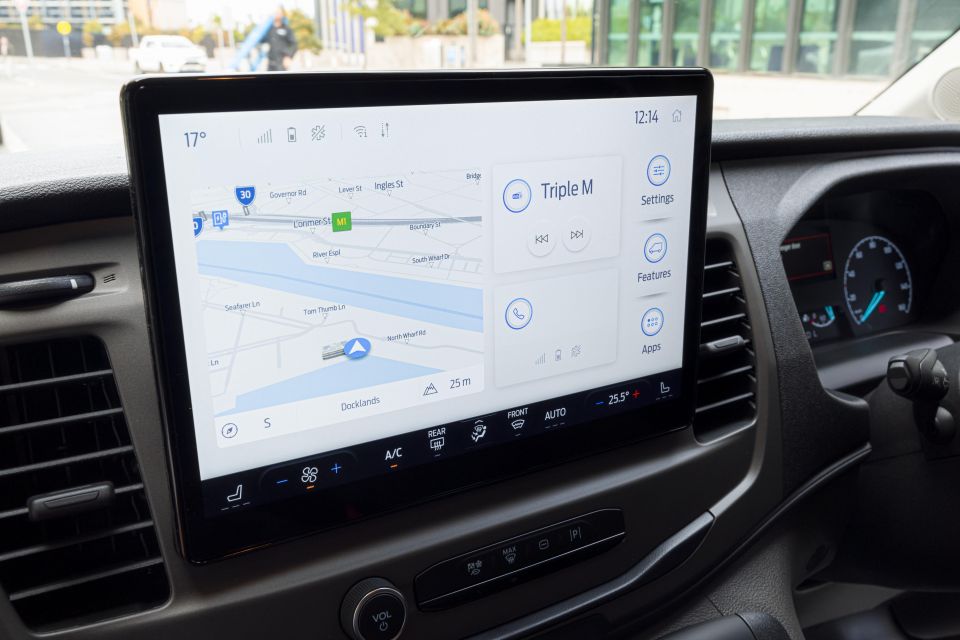
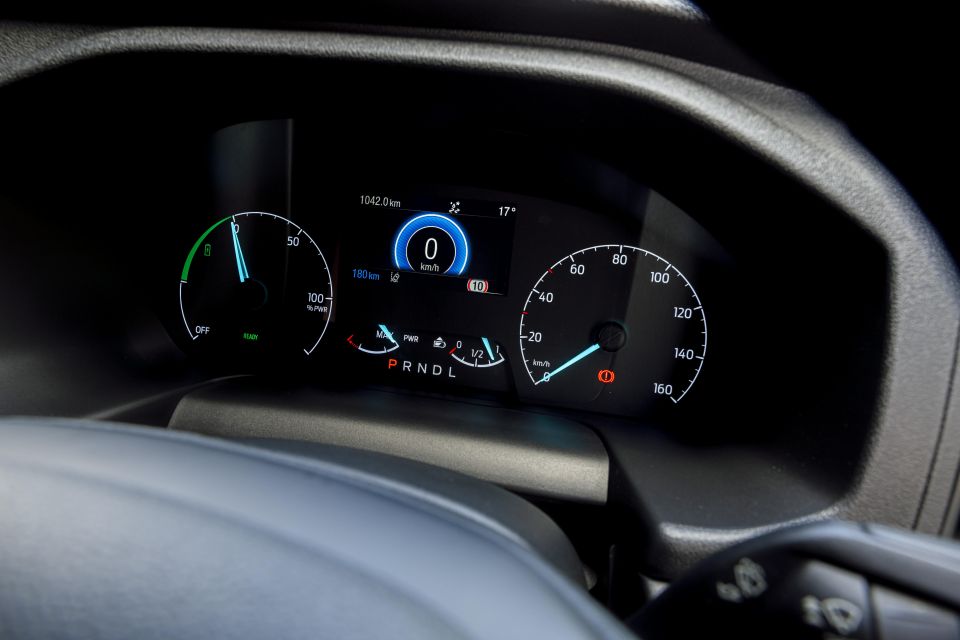
As is the case with the broader Blue Oval range, the E-Transit features FordPass connected services.
Users can check on their remaining range/charge status from their phones, plan a trip and have it sent to the car’s navigation, and find nearby charge stations using PlugShare data.
Currently, Ford does allow one app to control multiple vehicles, but doesn’t offer a full-on fleet telematics system. Apparently, something is in the works in Europe.
The load bay down back is, predictably, massive. There are eight tie-down points, and access comes courtesy of a large sliding side door, and barn doors at the rear.

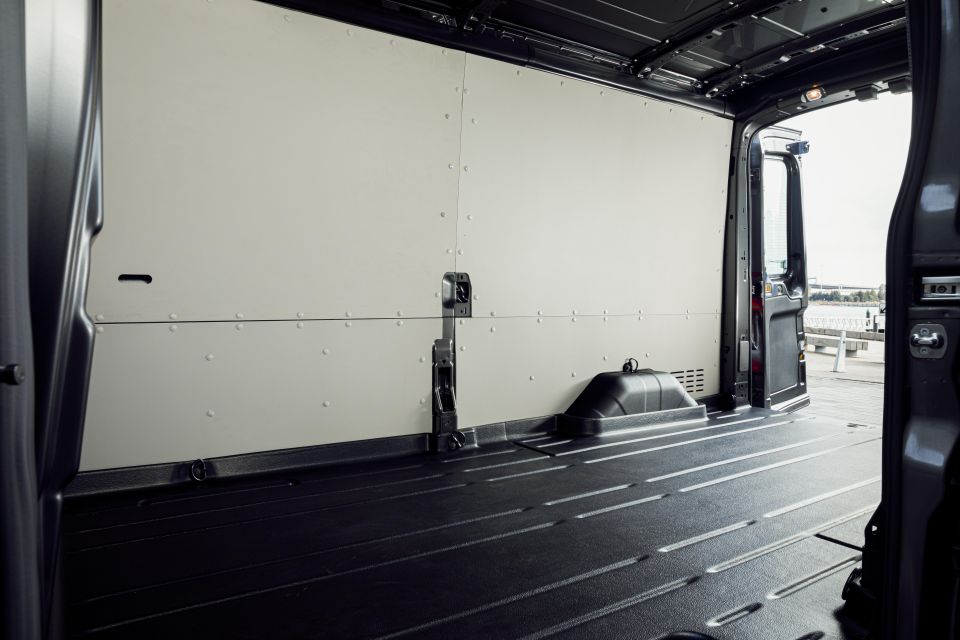
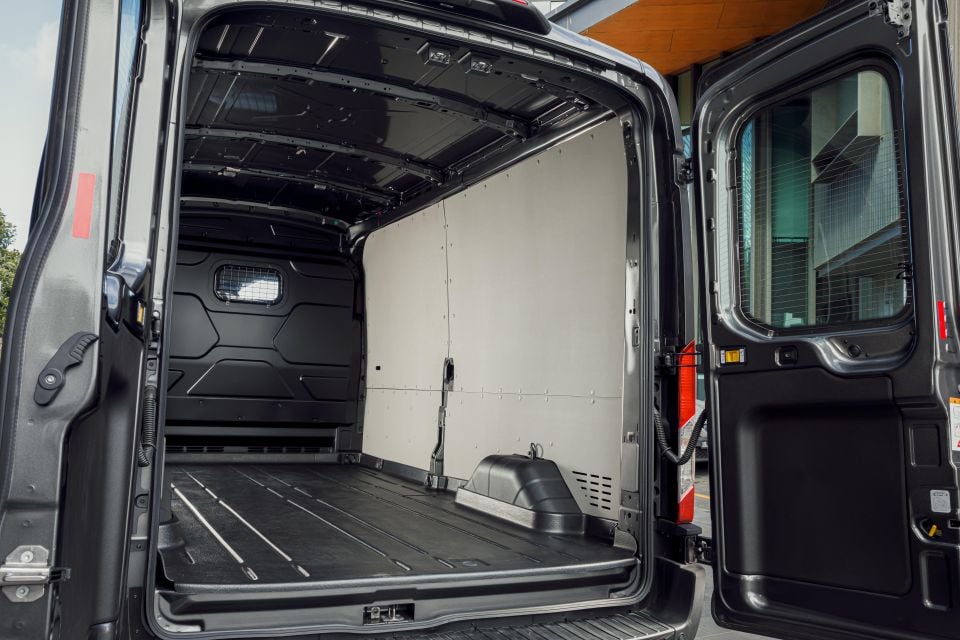
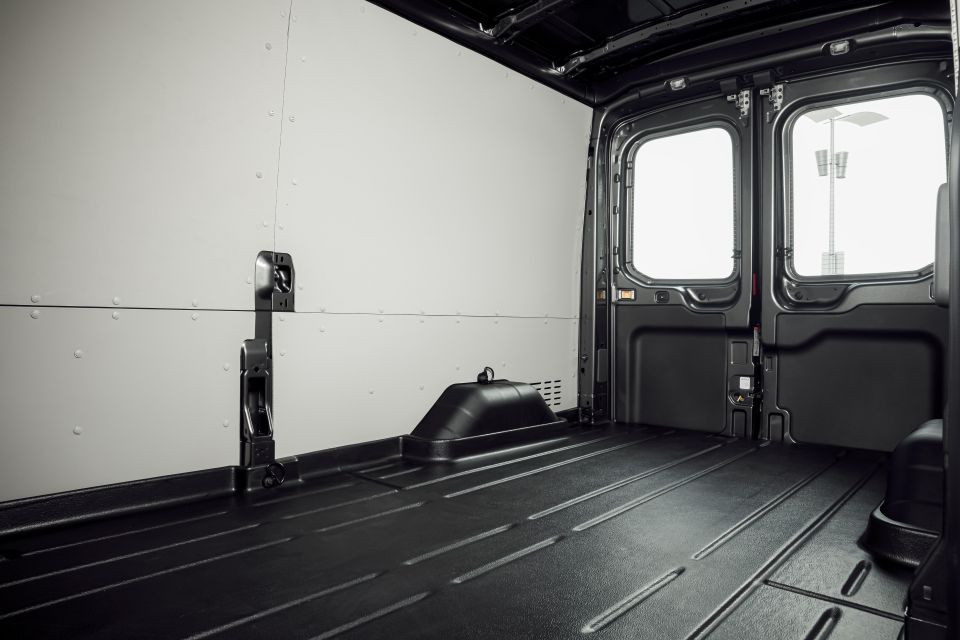
Those barn doors can be locked off to stop them blowing closed in the wind, and make it easy to load the car from a loading dock, or using a forklift.
The LED light above the load space is a nice touch, and can be turned on using a rubber button on the right-hand door.
Ford says the fact this Transit shares a chunk of its body and underpinnings with the diesel model makes it easier to customise the load bay with shelves, drawers, dividers… essentially whatever you need to get your cargo where it needs to go.
The E-Transit uses a 68kWh battery, good for a driving range of up to 307km on the stricter WLTP test cycle.
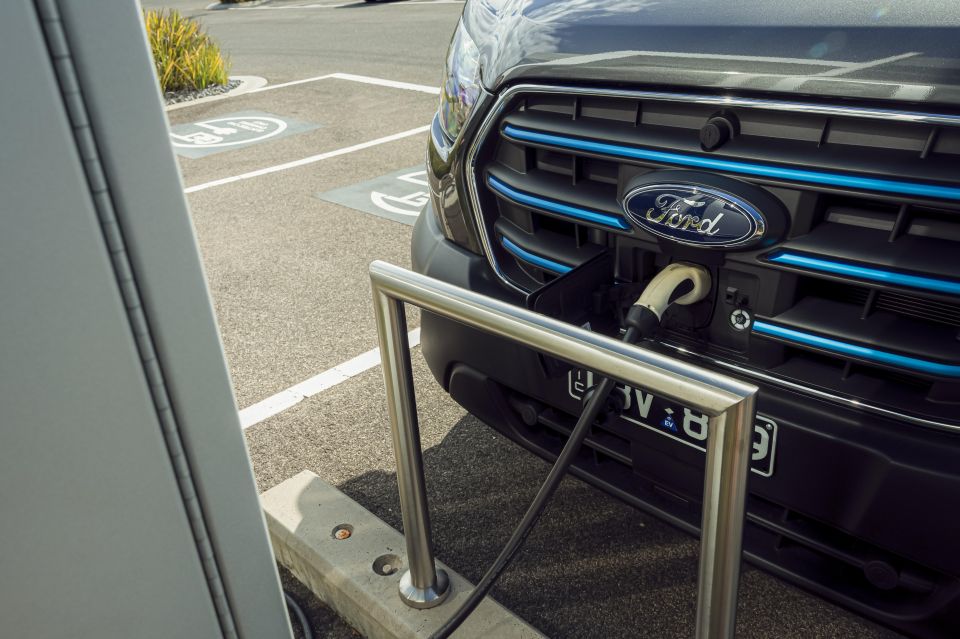
Its single electric motor produces 198kW of power and 430Nm of torque.
Some of those figures might sound familiar, and it’s not by accident; the E-Transit shares a chunk of its electric powertrain with the Mustang Mach-E SUV recently confirmed for Australia.
The E-Transit supports both AC charging and DC fast-charging. The 11.3kW on-board charger can deliver a 100 per cent charge in up to 8.2 hours using AC power, while the E-Transit can be charged at up to 115kW using a DC fast-charger.
That means the battery can be taken from 15 to 80 per cent in around 34 minutes.
| E-Transit 420L LWB | E-Transit 420L LWB High Roof | |
|---|---|---|
| Load space | 11m | 12.4m |
| GVM | 4250kg | 4250kg |
| Payload | 1611kg | 1566kg |
| Kerb weight | 2639kg | 2684kg |
We’ve said it before, but it’s weird not to have a diesel backing track when you prod the start button in the E-Transit.
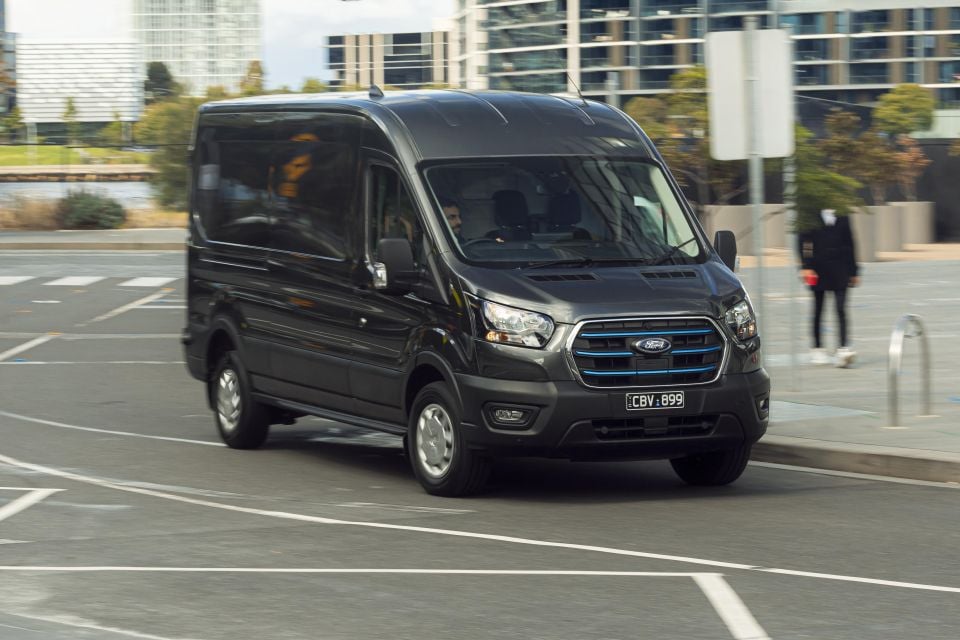
There’s not even a hum or whir from the electric motor, the car is just ready to go. It stays quiet as the speed rises, too.
Ford has made a real effort to improve noise and vibration suppression relative to the diesel model, because there’s no engine noise to drown out other squeaks, rattles, or sounds.
It’s worked, at least relative to the average van. There’s very little echoing from the wide open load bay thanks to the load divider, and the only real knock on refinement at speed is a bit of noise from the oversized side mirrors.
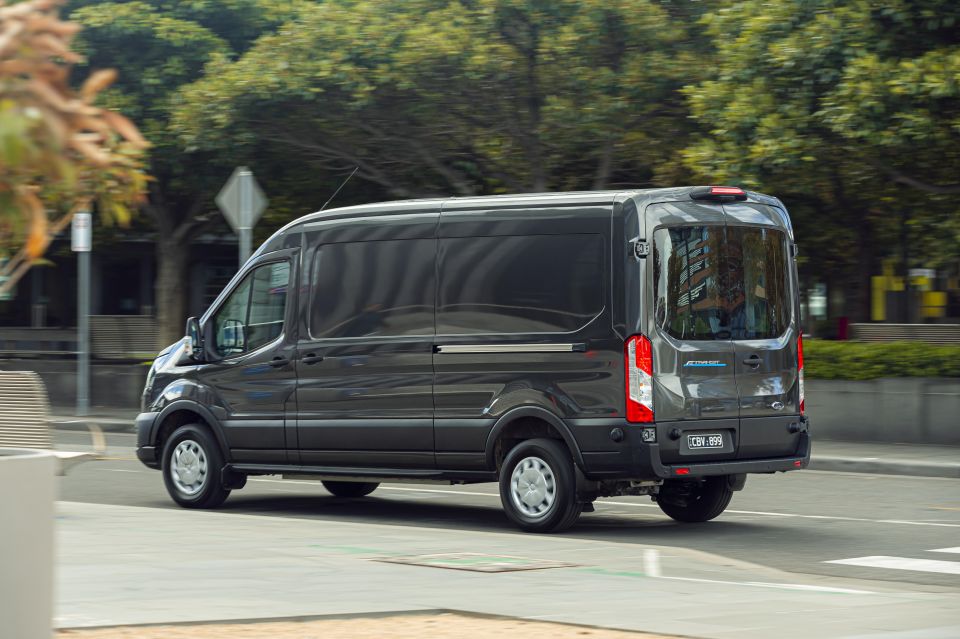
Put your foot down and there’s no Tesla-style shove in the back. The motor in the Transit delivers its torque smoothly and without fuss, and it’s very linear as the speed builds.
You won’t break precious cargo with a sharp stab of the right-hand pedal, which can only be a good thing, but we were expecting it to feel slightly sprightlier.
Regenerative braking can be toggled through a few modes, but it’s always slightly awkward. The brake pedal is high and quite soft, and the regeneration won’t bring the car to a complete stop – instead, you need to use the pedal at a crawl.
It takes a bit of practice to stop smoothly, although with more time behind the wheel drivers will no doubt tune in to what’s required.
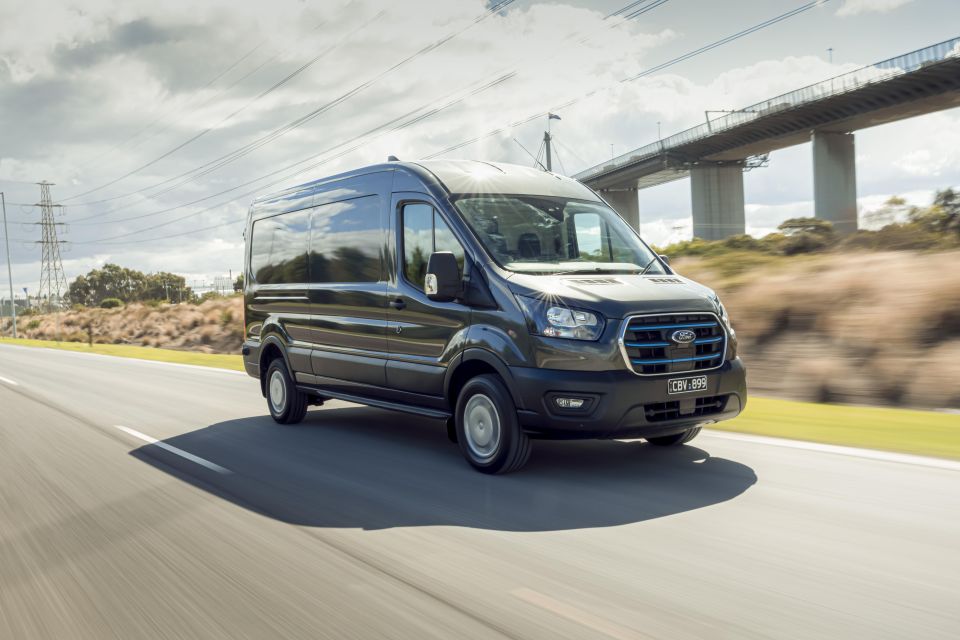
Beyond the brake, the learning curve is pretty shallow here. The steering is nicely weighted for work around town, and the massive windows mean forward visibility is excellent.
The reversing camera is nice and clear, and offers a bird-eye view of the rear bumper, which makes manoeuvring into tight parking spots (or up to loading bays) easier.
The massive mirrors are welcome, and Ford’s suite of driver assists – especially the blind-spot assist, given the lack of rear-side windows – come in handy around the city, where cyclists and smaller cars can get lost alongside a Transit.
At higher speeds it’s nice and settled. Although our stint at 100km/h was pretty limited, the E-Transit didn’t feel skittish or like it was blown around by passing trucks. Ford’s adaptive cruise control is smooth and smart, too.
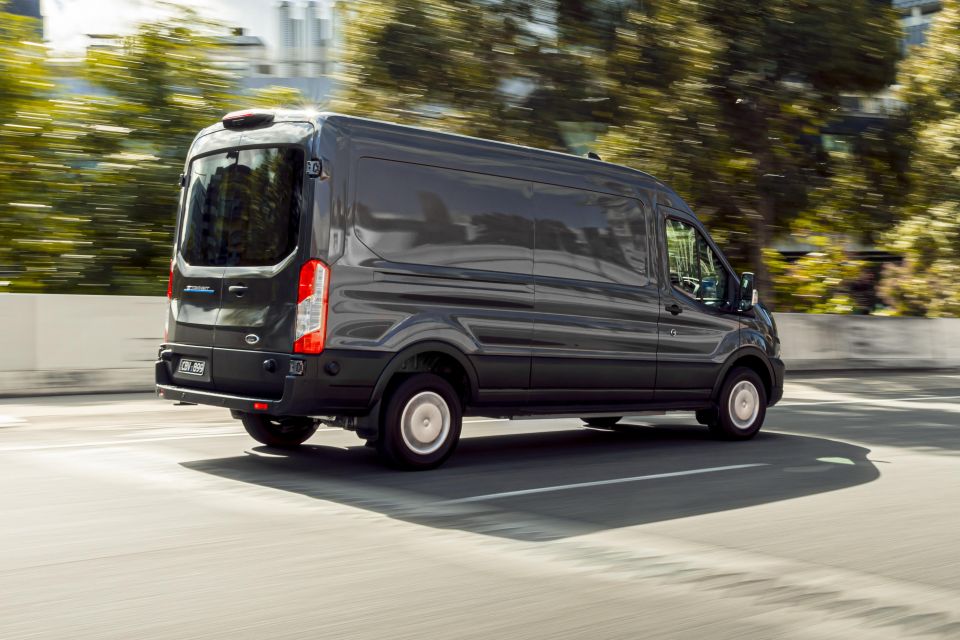
As for ride quality? The E-Transit drives like an unladen commercial vehicle, which is to say it’s a bit firmer than the average family car at the rear axle because it needs to be able to support a meaningful payload. With that said, it’s a reasonably comfortable place to spend time relative to other unladen large vans.
And the range question? Our drive was short, but we saw energy consumption of 23kWh/100km on our first stint behind the wheel, and around 26kWh/100km on the second.
That higher consumption figure is equivalent to around 260km of driving range. For its part, Ford says loading the E-Transit up to its maximum payload shouldn’t eat too badly into the range on offer, as aerodynamics are a bigger enemy of EV range than weight.
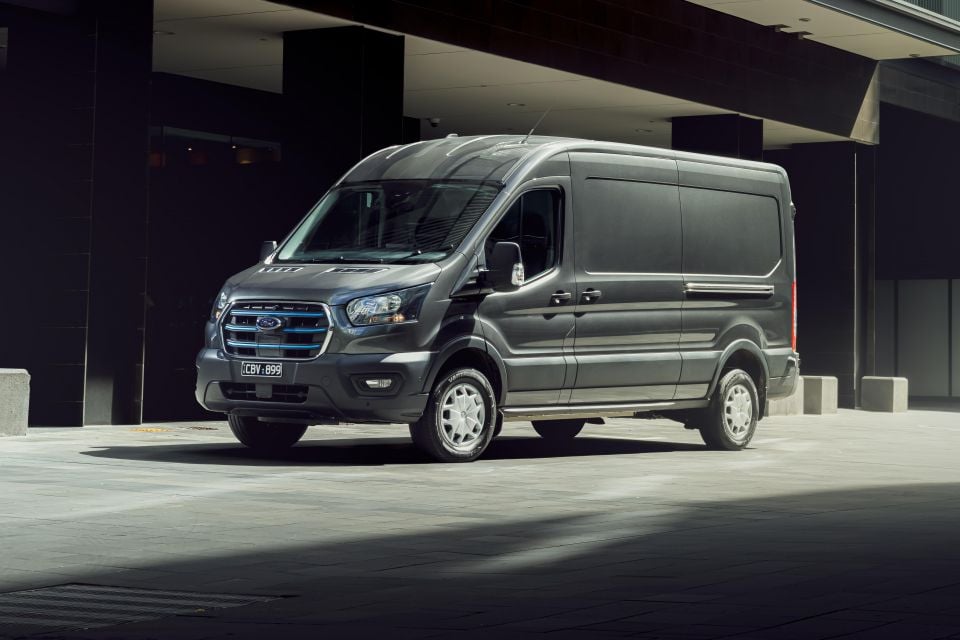
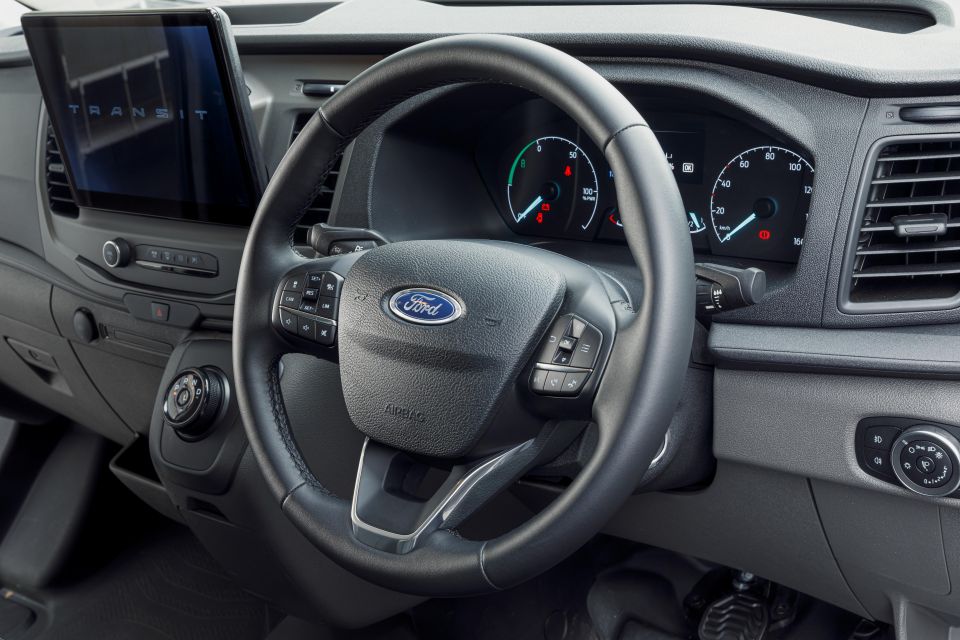
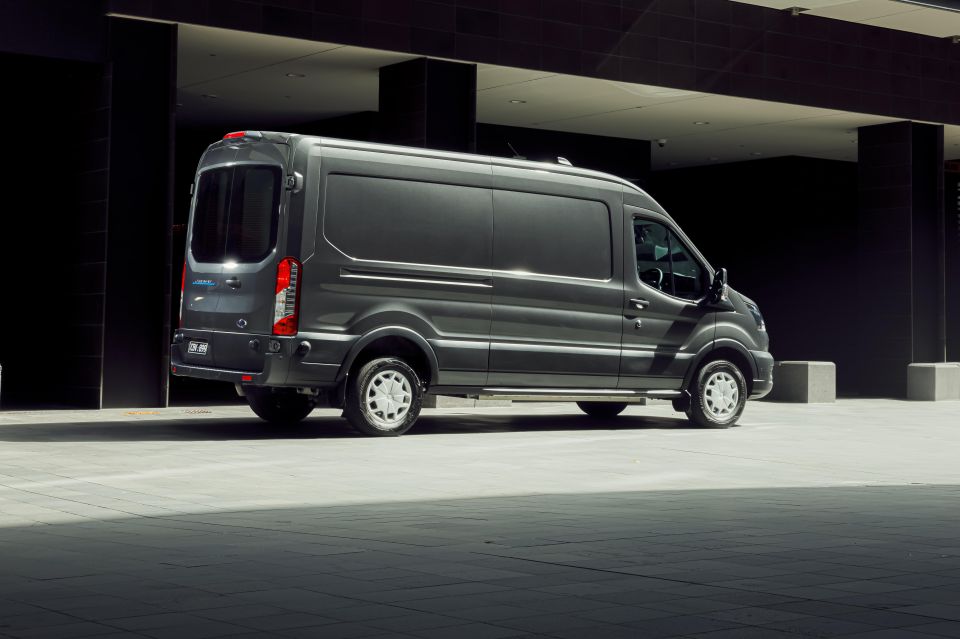
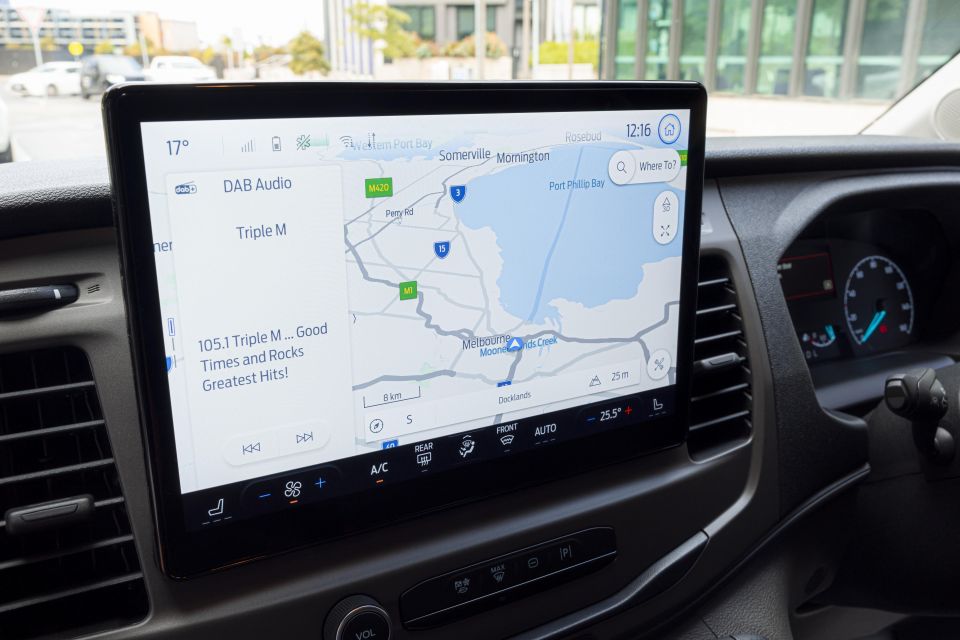
E-Transit highlights:
The Ford E-Transit hasn’t been crash tested by ANCAP or Euro NCAP.
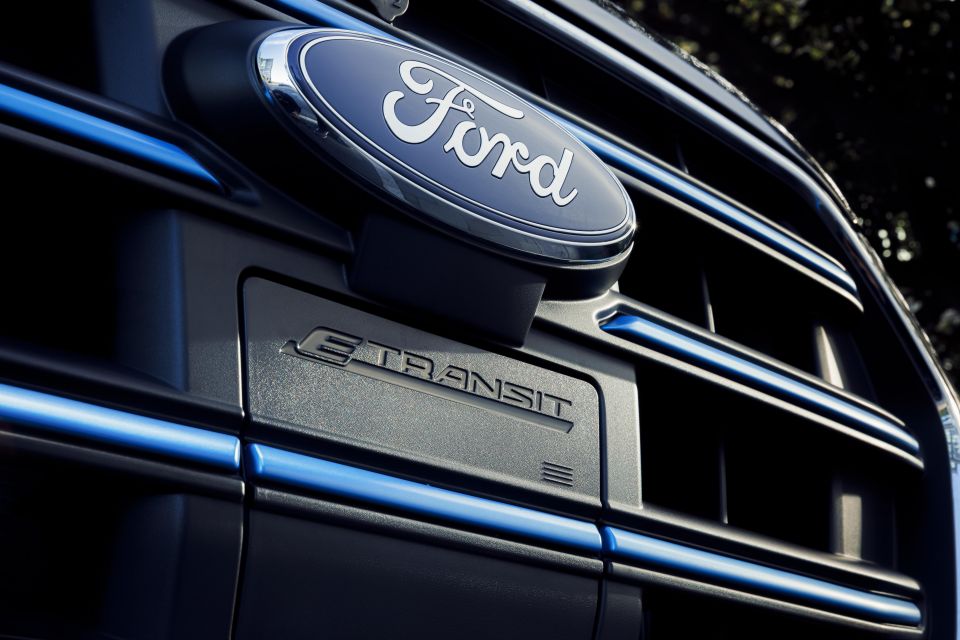
Where expert car reviews meet expert car buying – CarExpert gives you trusted advice, personalised service and real savings on your next new car.
Standard safety equipment includes:
The E-Transit is backed by the same five-year, unlimited-kilometre warranty as the wider Ford Australia range.
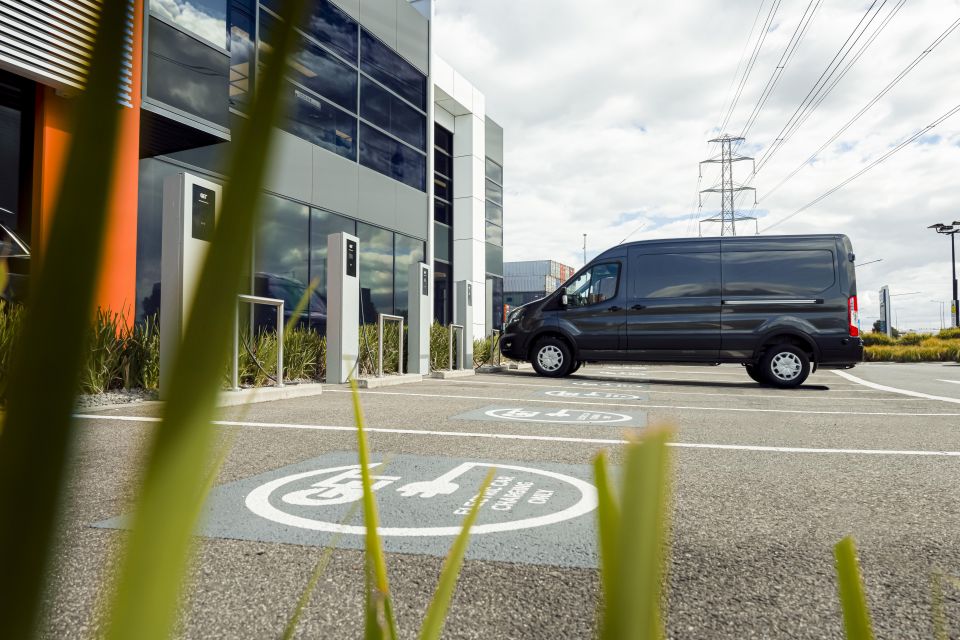
The lithium-ion battery pack and high-voltage system are backed by an eight-year, 160,000 kilometre warranty of their own.
There’s no doubt the E-Transit is a nicer van to drive than the diesel equivalent.
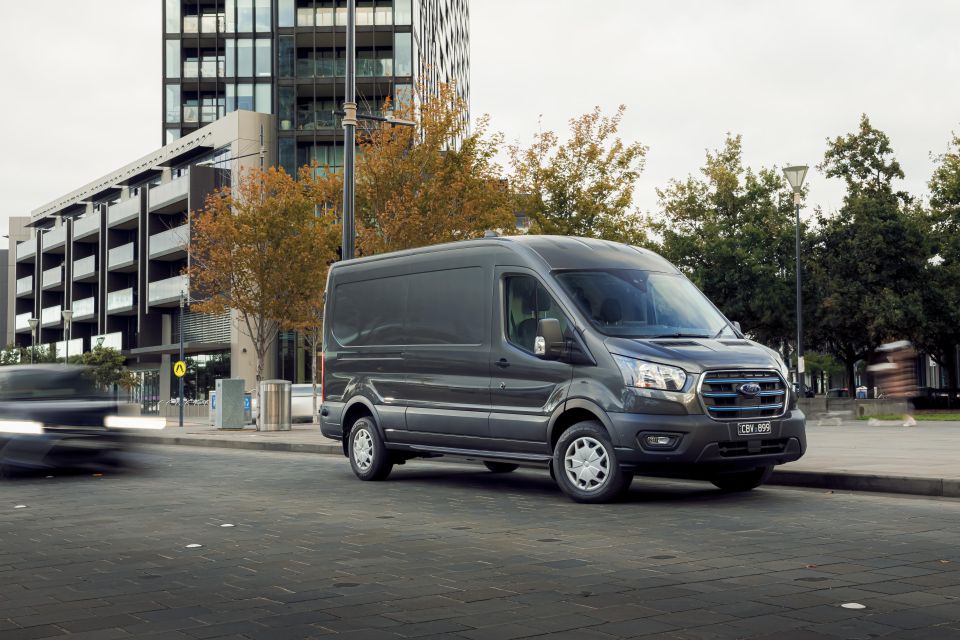
It’s smooth and quiet, as you’d expect, with the rest of the polish you’d expect of a nameplate closing in on its 80th birthday. There’s no doubt it’ll suit a certain type of urban delivery drivers very nicely.
The big question mark hanging over its head is just how ready the world’s fleets and private contractors are to adopt battery-powered vans en masse – and how they need to adapt their long-running habits to make the new world order work.
Ford knows that, which is why a chunk of its launch presentation about the E-Transit was dedicated to talking about how keen it is to work with buyers to understand how the car fits into their workflow.
Yes, it’s cheaper than its LDV rival, but it’s very expensive in the context of diesel vans – so you’ll need to have a long think about what you’re saving, and why you’re going electric.
There’s no doubt it’s a nicer van than those that came before it, but there are plenty of questions that still need answering about the E-Transit – and electric commercial vehicles in general.

Click the images for the full gallery
MORE: Everything Ford Transit
Where expert car reviews meet expert car buying – CarExpert gives you trusted advice, personalised service and real savings on your next new car.
Scott Collie is an automotive journalist based in Melbourne, Australia. Scott studied journalism at RMIT University and, after a lifelong obsession with everything automotive, started covering the car industry shortly afterwards. He has a passion for travel, and is an avid Melbourne Demons supporter.


Max Davies
4 Hours Ago


William Stopford
20 Hours Ago


Ben Zachariah
21 Hours Ago


Derek Fung
21 Hours Ago


Matt Campbell
1 Day Ago


William Stopford
2 Days Ago